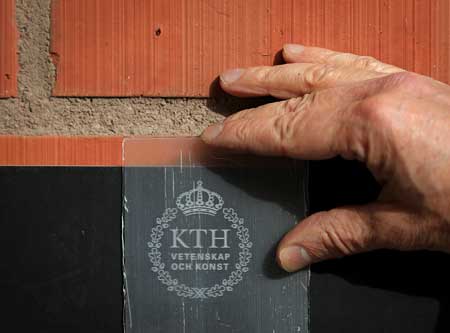| Posted: Mar 30, 2016 |
Wood windows? Swedes develop transparent wood material for buildings and solar cells
(Nanowerk News) Windows and solar panels in the future could be made from one of the best — and cheapest — construction materials known: wood. Researchers at Stockholm's KTH Royal Institute of Technology have developed a new transparent wood material that's suitable for mass production.
|
|
Lars Berglund, a professor at Wallenberg Wood Science Center at KTH, says that while optically transparent wood has been developed for microscopic samples in the study of wood anatomy, the KTH project introduces a way to use the material on a large scale. The finding was published in the American Chemical Society journal, Biomacromolecules ("Optically Transparent Wood from a Nanoporous Cellulosic Template: Combining Functional and Structural Performance").
|
 |
| A close-up look at the transparent wood created at KTH Royal Institute of Technology. (Photo: KTH Royal Institute of Technology)
|
|
"Transparent wood is a good material for solar cells, since it's a low-cost, readily available and renewable resource," Berglund says. "This becomes particularly important in covering large surfaces with solar cells."
|
|
Berglund says transparent wood panels can also be used for windows, and semitransparent facades, when the idea is to let light in but maintain privacy.
|
|
The optically transparent wood is a type of wood veneer in which the lignin, a component of the cell walls, is removed chemically.
|
|
"When the lignin is removed, the wood becomes beautifully white. But because wood isn't not naturally transparent, we achieve that effect with some nanoscale tailoring," he says.
|
|
The white porous veneer substrate is impregnated with a transparent polymer and the optical properties of the two are then matched, he says.
|
|
"No one has previously considered the possibility of creating larger transparent structures for use as solar cells and in buildings," he says.
|
|
Among the work to be done next is enhancing the transparency of the material and scaling up the manufacturing process, Berglund says.
|
|
"We also intend to work further with different types of wood," he adds.
|
|
"Wood is by far the most used bio-based material in buildings. It's attractive that the material comes from renewable sources. It also offers excellent mechanical properties, including strength, toughness, low density and low thermal conductivity."
|

